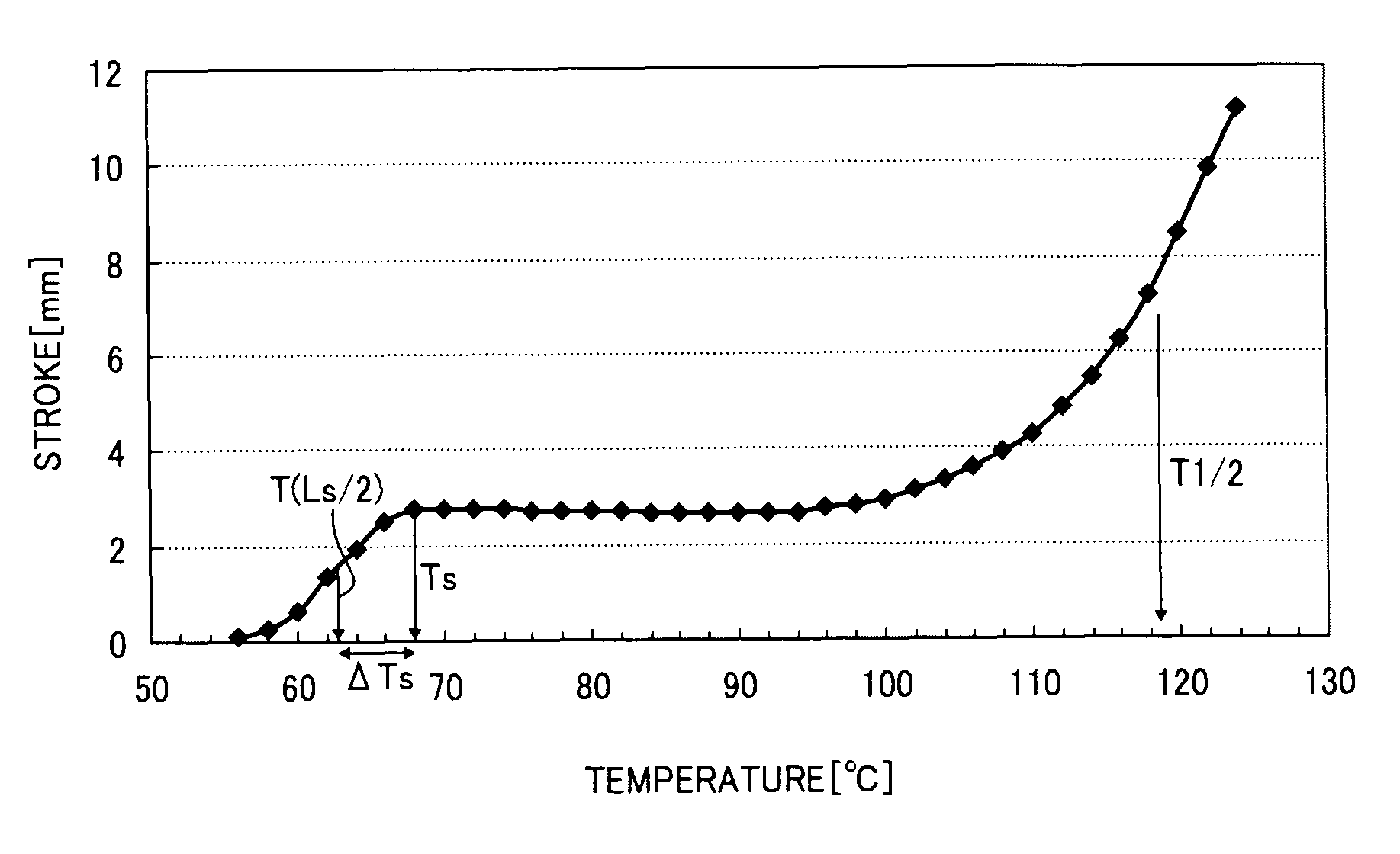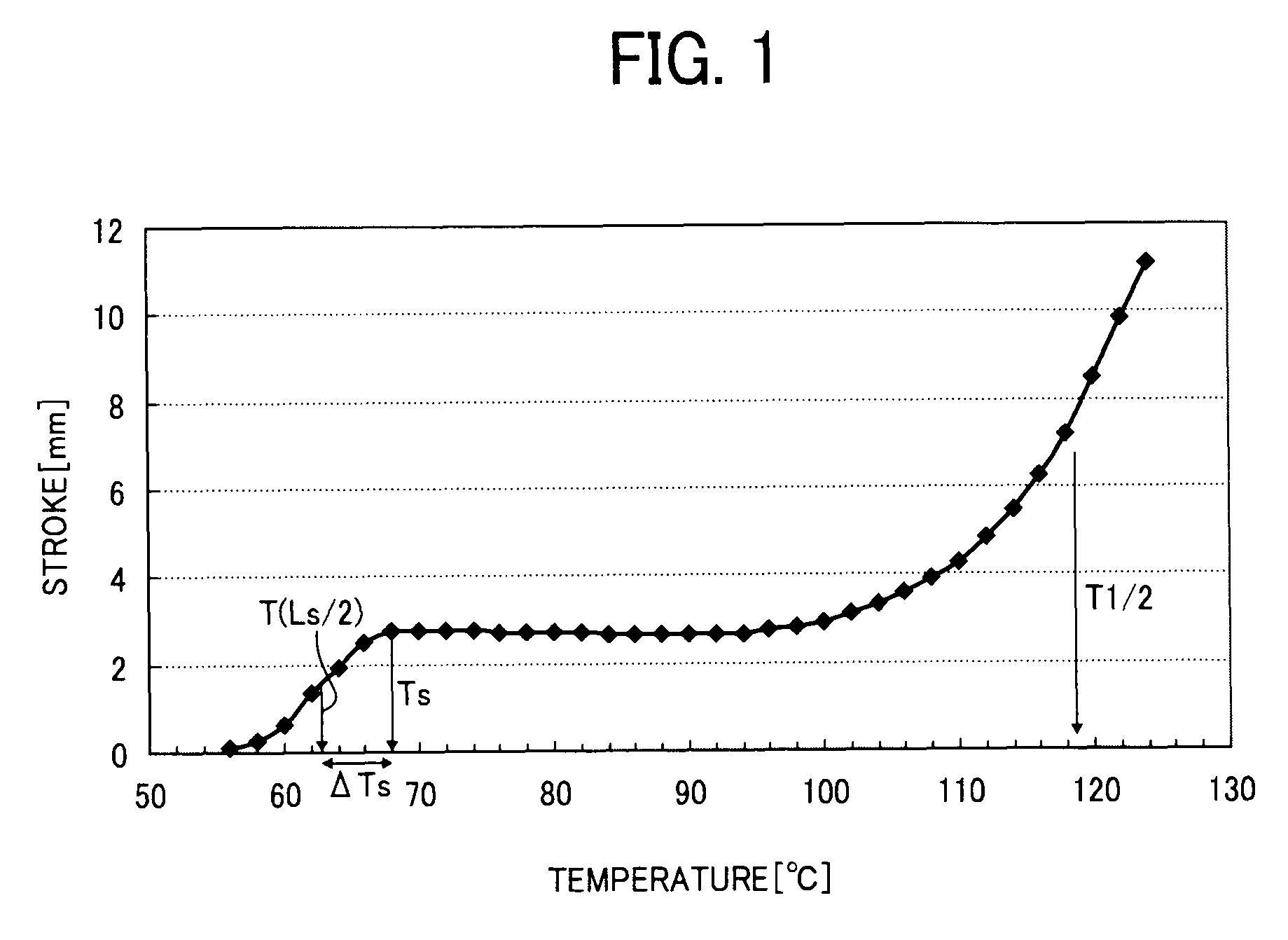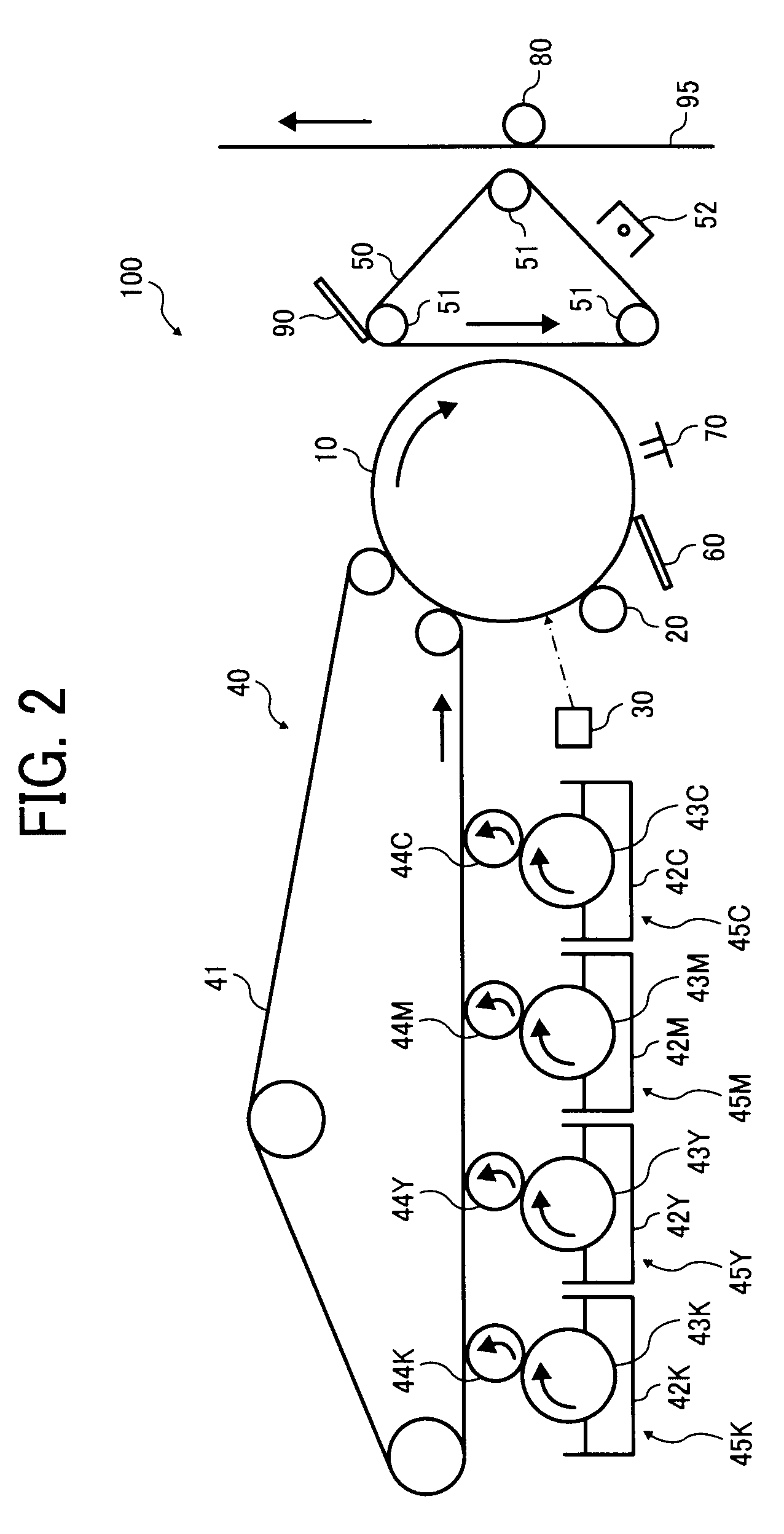Toner for developing electrostatic latent image, developer including the toner, and image forming method and image forming apparatus using the developer
a technology for developing electrostatic latent images and toners, which is applied in the direction of electrographic processes, electrographic processes using charge patterns, instruments, etc., can solve the problems of deterioration of heat-resistant storage stability, insufficient heat-resistant storage stability, and inability to meet the requirements of low-temperature fixability, etc., to achieve good low-temperature fixability and heat-resistant storage stability. , the effect of good low-temperature fixability
- Summary
- Abstract
- Description
- Claims
- Application Information
AI Technical Summary
Benefits of technology
Problems solved by technology
Method used
Image
Examples
example 1
[0154]683 parts of water, 11 parts of a sodium salt of an adduct of a sulfuric ester with ethyleneoxide methacrylate (ELEMINOL RS-30 from Sanyo Chemical Industries, Ltd.), 83 parts of styrene, 83 parts of methacrylate, 110 parts of butylacrylate and 1 part of persulfate ammonium were mixed in a reactor vessel including a stirrer and a thermometer, and the mixture was stirred for 15 min at 3,500 rpm to prepare a white emulsion therein. The white emulsion was heated to have a temperature of 75° C. and reacted for 5 hrs. Further, 30 parts of an aqueous solution of persulfate ammonium having a concentration of 1% were added thereto and the mixture was aged for 3 hrs at 75° C. to prepare an aqueous dispersion [particulate dispersion 1]. The [particulate dispersion 1] was measured by LA-920 to find a volume-average particle diameter thereof was 120 nm.
[0155]990 parts of water, 83 parts of the [particulate dispersion 1], 40 parts of an aqueous solution of sodium dodecyldiphenyletherdisulfo...
example 2
[0174]The procedure for preparation of the toner in Example 1 was repeated except for changing the particulate dispersion 1 and the crystalline polyester resin as follows. Properties of the toner are shown in Table 1 and the results of evaluation thereof are shown in Table 2.
[0175]683 parts of water, 11 parts of a sodium salt of an adduct of a sulfuric ester with ethyleneoxide methacrylate (ELEMINOL RS-30 from Sanyo Chemical Industries, Ltd.), 83 parts of styrene, 83 parts of methacrylate, 110 parts of butylacrylate and 1 part of persulfate ammonium were mixed in a reactor vessel including a stirrer and a thermometer, and the mixture was stirred for 15 min at 500 rpm to prepare a white emulsion therein. The white emulsion was heated to have a temperature of 75° C. and reacted for 5 hrs. Further, 30 parts of an aqueous solution of persulfate ammonium having a concentration of 1% were added thereto and the mixture was aged for 12 hrs at 65° C. to prepare an aqueous dispersion [particu...
example 3
[0177]The procedure for preparation of the toner in Example 1 was repeated except for changing the amount of the [masterbatch 1] from 500 to 700 to prepare the [material solution 1]. Properties of the toner are shown in Table 1 and the results of evaluation thereof are shown in Table 2.
PUM
| Property | Measurement | Unit |
|---|---|---|
| melting point | aaaaa | aaaaa |
| melting point | aaaaa | aaaaa |
| melting point | aaaaa | aaaaa |
Abstract
Description
Claims
Application Information
 Login to View More
Login to View More - R&D
- Intellectual Property
- Life Sciences
- Materials
- Tech Scout
- Unparalleled Data Quality
- Higher Quality Content
- 60% Fewer Hallucinations
Browse by: Latest US Patents, China's latest patents, Technical Efficacy Thesaurus, Application Domain, Technology Topic, Popular Technical Reports.
© 2025 PatSnap. All rights reserved.Legal|Privacy policy|Modern Slavery Act Transparency Statement|Sitemap|About US| Contact US: help@patsnap.com



